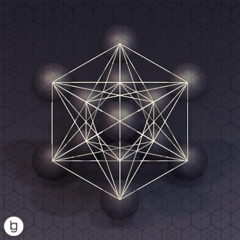#1 2025-06-07 10:03:52 | 只看该作者
- 龍爪翻書
- 会员

- 来自 台北
- Registered: 2011-07-10
- Posts: 2,953
Why do so many cultures have dragon legends? - Timothy J. Burbery
有 7 位朋友喜欢这篇文章:火柴龍, Sherixs, NancalaStarry, 安德Endur~, Hscyrilon, 与黑语焉, shiningdracon
←目前頭像感謝安雅贈圖。

Quit, dont quit... Noodles, dont noodles...
There is a saying: yesterday is history, tomorrow is a mystery, but today is a gift. That is why it is called the present.
离线
#2 2025-07-01 18:16:59 | 只看该作者
- shiningdracon
- 寻道龙

- Registered: 2008-11-03
- Posts: 4,346
回应: Why do so many cultures have dragon legends? - Timothy J. Burbery
(柔和的音樂)
從中國的龍到菲律賓的巴庫納瓦,
從蘇格蘭的“thehir”到希臘的九頭蛇海德拉,
龍在幾千年來不斷激發人類的想象。
它們在全球神話中的普遍存在,
使許多學者開始思考它們可能的起源。
難道是人們爲了理解暴風雨或龍捲風等猛烈天氣現象而創造了龍的傳說?
古代人是否把火山噴發,
或是奇異骨骼的出土,
解讀爲噴火怪獸潛伏在附近的證據?
像這樣的疑問正是地質神話學(geomythology)研究的核心,
這個領域探討神話與其起源地區地質之間的聯繫。
其基本觀點是:
傳說不僅僅是虛構,
它們也是對過去的記載與保存。
這些故事中可能蘊含着祖先對自然世界理解的寶貴洞見。地質神話學不僅探究神話生物如獨角獸、人面牛身怪和龍的起源,
還可能成爲科學發現的催化劑。
例如在澳大利亞,研究者追蹤一則原住民的“夢幻時光”傳說,
故事講述一顆星星墜入水坑,
他們據此找到了一個此前未被記錄的隕石撞擊坑。
這個領域也幫助修正了地質年代表。
比如夏威夷的火山女神佩雷(Pele)傳說,
促使科學家重新思考基拉韋厄火山的自然歷史。
根據女神旅程中發生的事件,
科學家重新校準了該火山第一次塌陷的時間,
這也形成了如今仍然活躍的巨大火山口。那麼,地質神話學對龍揭示了什麼?
就我們所知,噴火的爬行動物從未真實存在。
雖然各種龍的形象不太可能有統一的起源,
但有學者認爲其中一些傳說可能源於史前動物的化石。
例如希臘神話中卡德摩斯(Cadmus)擊敗一條兇猛水龍,
並將它的鋸齒狀牙齒種入土中。
而在歐洲大陸,猛獁象的遺骸及其大型錐形臼齒被廣泛發現。
因此有觀點認爲,古人可能在挖出這些化石後,
創作了卡德摩斯的故事。古生物學家也曾在希俄斯島(Kios)挖掘出猛獁象化石,
該島曾被傳說中一條長着鋸齒牙齒的龍所“襲擾”。
更令人信服的是,世界各地龍的特徵往往反映了當地的化石發現。
例如中國祥瑞的龍的鹿角,
可能受到中新世鹿類化石頭骨的啓發,
這些化石在中國北方非常常見。
在巴基斯坦的舒阿拉山丘,
龍擁有獨特寶石冠飾的傳說,
可能受到當地化石中常含方解石晶體的啓發,
如一種已滅絕的長頸獸——西瓦獸(Civatherium)。而諸如噴火等“怪物特徵”,
可能與地熱地貌如火山或溫泉相關。
以奇美拉(Chimera)爲例——
它是一種獅頭、山羊身、龍尾的混合怪獸,
傳說起源於今日的土耳其地區。
神話中,英雄貝勒羅芬(Bellerophon)
將一塊鉛塞入它的火喉使其窒息而死。
有學者推測,土耳其南部的天然氣火焰口(會自然噴火)
可能激發了這種噴火怪獸的傳說。同樣地,土耳其西部看似被燒焦的地貌,
實際上是古代火山活動的遺蹟,
可能激發了宙斯與百頭怪颱風(Typhon)激戰的神話。
一些版本中甚至描述大地本身
就是被宙斯的雷電所焚燬的戰場。不過,從龍的傳說中,我們不僅能探索其起源。
在中國,古生物學家常常在傳說中“龍骨”出土的地區進行發掘。
事實上,世界上恐龍足跡最豐富的地區之一
就叫作“黃龍溝”(Huwanglanggou),
意爲“黃龍之谷”。因此,儘管這些神話生物可能從未在洞穴或海洋中游蕩過,
它們的故事仍持續爲幻想與科學提供靈感。想繼續學習嗎?
觀看更多視頻,挑戰你的既有認知,
或瞭解你所未曾涉獵的領域。
訂閱,保持好奇。
(soft music)
From the Chinese long to the Filipino Bakunawa,
the Scottish thehir to the Greek hydra,
dragons have inflamed imaginations for millennia.
Their ubiquity across world mythology
has led many scholars to ponder their possible origins.
Could it be that tales of dragons
were crafted to make sense of violent weather events
like storms or tornadoes?
Did ancient peoples interpret volcanic eruptions
or the unearthing of strange-looking bones
as evidence that fire-breathing beasts lurked nearby?
Questions like these are central to geomethology,
which examines the connections between myths
and the geology of the regions where they originated.
It's based on the idea
that legends are more than just fiction.
They're also preserved record of the past.
And these stories can contain valuable insight
into our ancestors' understanding of the natural world.
Beyond questioning the origins of mythical beasts
like rithins, minotaurs, and dragons,
geomethology can be a catalyst for scientific discovery.
In Australia, for instance, researchers follow the clues
in an ancient indigenous dream-time legend,
which recounts a star falling into a waterhole
to locate a previously uncharted meteor impact.
And the field has also helped
to correct geological timelines.
Stories of Pele, the Hawaiian goddess of volcanoes,
for example, led scientists to rethink
the natural history of the Kilauea volcano.
Following the events in the goddess's journey,
they recalibrated when they believed
the volcano first collapsed,
forming the vast, active caldera still present today.
So what has geomethology uncovered about dragons?
As far as we know, fire-breathing reptilian creatures
never existed.
And while it's unlikely that this diverse set
of creatures shares a single origin,
it's believed that some tales might be tied
to the fossils of prehistoric animals.
One such story is the Greek myth of Cadmus,
who, according to legend, defeated a fierce water dragon
and sewed it jagged teeth into soil.
It's known that the remains of mastodons,
including their large and pointy molars,
are abundantly scattered across Europe.
This has led some to suggest that ancient storytellers
may have crafted Cadmus's tale
after unearthing these mastodon fossils.
Paleontologists have similarly dug up mastodon bones
in Kios, a Greek island that was once said
to have been terrorized by another jagged toothed dragon.
What's even more compelling is that the distinct
physical features of dragons from different regions
often mirror local fossil find.
The antlers of the auspicious and celebrated Chinese long
may have been influenced by fossilized biocene deer
skulls, which are commonly found in northern China.
In the Xuala Hills of Pakistan, legends of dragons
with unique jeweled crests may have been inspired
by the calcite crystals often embedded in local fossils,
such as the Civatherium, an extinct giraffe's beast.
Other beastly characteristics like flame blowing
may have been connected to geothermal features
like volcanoes and hot springs.
Take the Chimera, a hybrid of a lion, goat, and dragon,
supposedly originating in what's now Turkey.
According to legend, the beast was slain
by the hero Balerophon, who thrust a block of lead
into its fiery throat, choking it.
Some scholars hypothesize that the fire-sitting
natural gas vents in southern Turkey
may have sparked stories of this flame-blowing beast.
Similarly, the seemingly burnt landscapes
of western Turkey, which are the result of ancient volcanic
activity, could have stirred stories
of the epic clash of Zeus and the 100-headed typhoon.
In fact, some telling say the land itself
was scorched by Zeus' bolts during their deadly duel.
And more can be gleaned from dragon myth
than just their possible origins.
In China, paleontologists often plan digs in regions well known
for their supposed dragon bone deposits.
In fact, one of the richest areas in the world
for finding dinosaur track is called Huwanglanggou,
which translates to Yellow Dragon Valley.
So while these mythical beasts may never
have prowled our cave size or seas,
their tales continue to be a source of inspiration
in both fantasy and science alike.
Ready to keep learning?
Watch these videos to either challenge
what you think you know or learn more about what you don't.
Subscribe and stay curious.
有 1 位朋友喜欢这篇文章:龍爪翻書
以龍為本
<-- 目前頭像 by 理業化肥
聯繫方式:站內短消息或郵件
离线
#3 2025-07-02 15:19:47 | 只看该作者
- shiningdracon
- 寻道龙

- Registered: 2008-11-03
- Posts: 4,346
回应: Why do so many cultures have dragon legends? - Timothy J. Burbery
地質神話學(geomythology)
地質神話學(Geomythology,又稱“地球傳說”“觀察神話”“自然知識”或“自然神話學〔physico-mythology〕”)是一個研究“前科學文化”所創作的成因性口頭傳統(etiological oral traditions)的學科。這些傳統通過詩意隱喻和神話意象,試圖解釋各種地質現象,如火山、地震、洪水、化石以及其他自然地貌特徵。(一個相關領域“考古天文學”〔archaeo-astronomy〕則研究古代對天象的認識。)
地質神話一般可分爲兩類:
對顯著地質地貌的民間解釋;
對古代人親歷的災難性地質事件的敘述,這類敘述往往經過口耳相傳,內容變形混雜。
對於發生在史前的地貌事件,古人通過觀察與想象構建出神話性解釋,並在千百年間代代相傳。
對於人類歷史時期內發生的自然災害,則通常以口述傳統方式被記錄下來,且在傳播過程中常常附加了超自然細節。由於這些敘述採用的是神話語言和口頭民俗形式,科學家與歷史學者常常忽視了其中所蘊含的“真實內核”與理性要素。然而,儘管有些地質神話純屬幻想或源於誤解(例如將人或生物“變爲岩石”的傳說來解釋地貌形狀),許多地質神話卻包含了對地質過程的驚人準確洞察,甚至保留了遠古時期的目擊證據。
現代科學研究已經揭示,許多古老的地球傳說實際上是基於理性推測和對真實但不尋常自然現象的長期、細緻觀察所形成的理解。
簡單來說,這門學科尋找真實發生過的地質事件通過神話傳說所保留下來的目擊信息。
以龍為本
<-- 目前頭像 by 理業化肥
聯繫方式:站內短消息或郵件
离线
 爪機版
爪機版 欢迎来到龙之里
欢迎来到龙之里